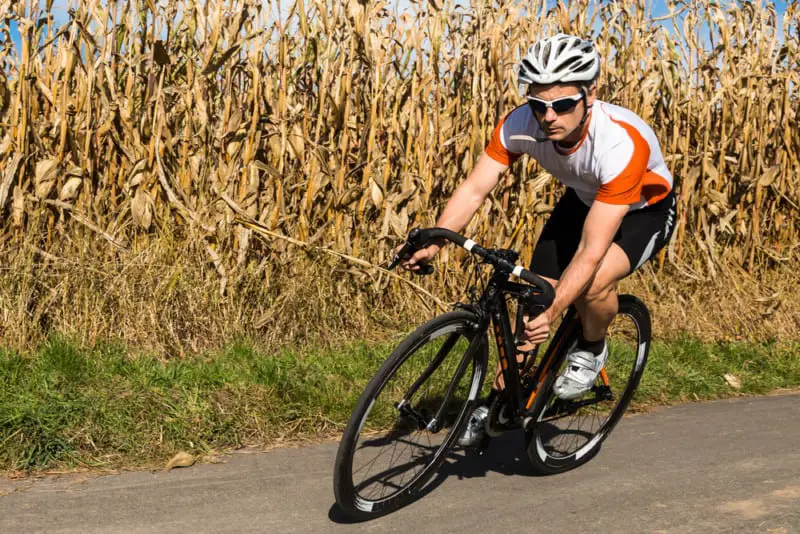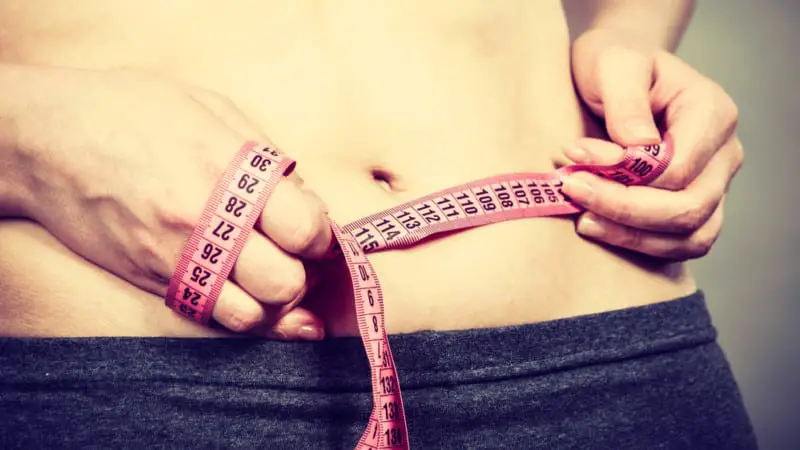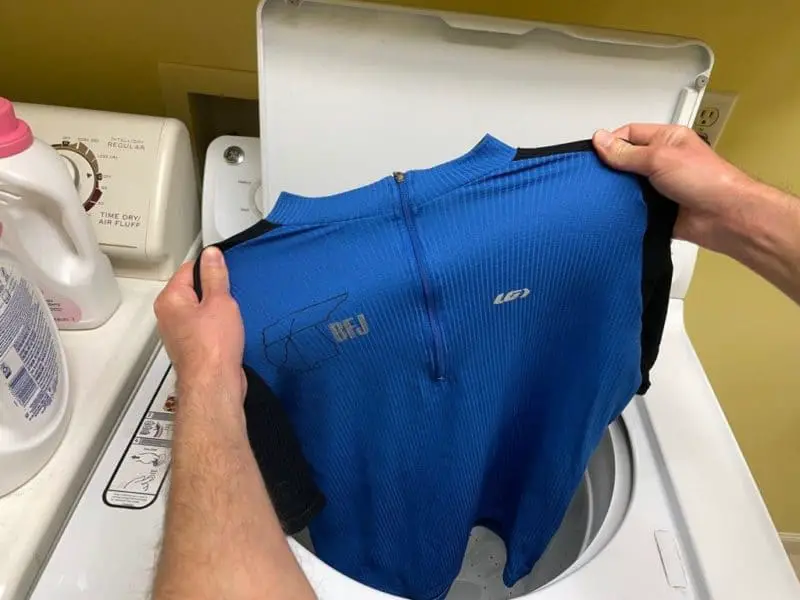How do you know what size cycling jersey to buy when everyone looks like they’re wearing an extra small? It seems like you should be going a size down from what you normally wear, but cycling jersey sizing is not the same as your regular clothes.
Do Cycling Jersey Sizes Run Small?
Cycling jersey sizes can run small depending on the brand. What size you get depends on the fit you’re looking for. If you’re looking for a more relaxed fit, go up a size. If you want your jersey to be as form-fitting as possible, you may have to go down a size.
Sizing varies depending on what brand you’re buying from. Within those brands are different cuts and fits. But whatever jersey you buy will feel tighter than your everyday clothes.

From the length of the jersey to the way it sits across your chest. Every aspect is designed to improve your performance as a rider.
Cycling jerseys are made to fit like a second skin. Your jersey should not be cutting off your circulation, but it should remain close and fit to the body while you’re cycling.
The snug fit helps to reduce drag.
The looser your jersey the more wind resistance you’ll have while you’re riding. This is something you’ll want to avoid, especially if you’re cycling competitively.
A fitted jersey also helps to prevent chafing.
Wearing loose fabrics while your riding creates friction against your skin. Which then causes chafing, and no one wants that.
Are Cycling Jerseys Usually Short?
Cycling jerseys are shorter than your average shirt. Your jersey should sit right below your hip line, just a few inches below your navel.
You may also notice that cycling jerseys are a bit longer in the back than they are in the front. This is because jerseys are designed for you to be bent forward, in the position you’re in when you’re riding.
The back is long enough so that you don’t have any skin exposed. And the front is short enough so that the fabric isn’t bunched up while you’re bent over. If your jersey is too long or too short it will make for an uncomfortable ride.
How to Find Your Cycling Jersey Size
Unfortunately, shopping for cycling jerseys isn’t as easy as shopping for t-shirts. If you want to know your cycling jersey size, you have to measure yourself. Before you go shopping for your jersey, measure the size of your chest, waist, and hips.
You’ll need a flexible measuring tape for this. If you don’t have one, you can get the one I use from Amazon (FYI – we may get a commission on qualifying sales).

It is important to know how to measure yourself correctly. This will make sure your sizing is as accurate as possible and your jersey fits comfortably. Here are a few tips for each measurement:
1. Chest Size
Wrap the measuring tape under your armpits and around the fullest part of your chest. Do not squeeze your chest with the measuring tape, make sure it is just resting on your chest.
2. Waist Size
Wrap the measuring tape evenly between the top of your hips and the bottom of your ribs. Pull the tape tight but not so tight that it’s digging into you. Keep a calm breath as you measure.
It is best to measure your waist twice for the most accurate measurement. This is to be sure your belly wasn’t poked out or sucked in while you were taking your measurements.
3. Hips Size
When taking your hip measurements make sure the tape is wrapped around the widest part of your hips. This will include your butt. Wrap the tape snug around your hips and you’ll have your hip size.
If you really want to be sure you’re measuring yourself correctly, check out the quick video guide below. Note: the first 40 seconds of the video is the part where they show the measurements.
Now that you have all your measurements, compare them to a cycling jersey size chart. You can find one on almost any website that sells cycling apparel.
How to Tell if a Cycling Jersey Fits
There are a few different types of cycling jerseys, depending on what brand you’re buying from. Different cycling brands offer different jersey fits. There’s comfort fit, race fit, aero fit, club fit, and more, depending on where you’re looking.

Before you can know whether a cycling jersey fits well or not you have to know what fit you’re looking for.
The two most common jersey fits are Race Fit and Club Fit.
1. Race Fit
Race fit jerseys are tight and form-fitting. Fitting snug to your body without being restrictive. These are the jerseys that should feel like a second skin.
Race fit jerseys are most commonly worn by competitive cyclists. Designed for optimal aerodynamic riding. These jerseys are made to be unaffected by heavy wind and engineered to keep you as comfortable as possible during long-distance bike rides.
2. Club Fit
Club fit jerseys are a much looser fit than race fit. This jersey is closer to the fit of a regular t-shirt. They are loose enough to still have movement but still fitted enough to prevent wind resistance.
This fit is usually worn by mountain bikers who, unless they’re racing, don’t normally have to worry about aerodynamics. Or by people with larger body mass. People with larger arms or stomachs normally go for a club fit.
This jersey is also great for casual riding. If you’re riding just for fun or have a casual commute, a club fit is the jersey to go for.
Once you know your size and what fit you’re looking for, it’s time to try it on and make sure it fits correctly.
What to Look for When You Try it On
There are three key areas you should look for when trying on a cycling jersey. The length, sleeves, and chest/shoulders. Paying attention to these areas is how you can tell you if your jersey fits properly.
Start by getting on your bike or crouching down into the position you’re in while you’re cycling. Because your cycling jersey is designed for cycling it will not feel comfortable when you’re standing up straight.
1. Sleeves
The sleeves of your jersey should be fairly tight. The cuff of the sleeves on any cycling jersey, whether it’s club fit or race fit, should be snug on your arms. They shouldn’t cut off your circulation, but they should have some compression.
2. Length
You do not want a long cycling jersey. Your jersey should be right below your hip, no farther. If your jersey is too long it can get caught on your seat and may cause drag. No part of your jersey should be flowing in the wind.
Just as much as you want to avoid a long jersey, you want to avoid one that is too short. Your skin should not be exposed while you’re riding. If your jersey rides up when you raise your hands over your head or when you’re in a cycling position, you need a larger size.
3. Chest/Shoulders
There shouldn’t be much loose fabric in your chest or shoulder area. Yet these areas shouldn’t be too tight either. You want your jersey to be form-fitting but without limiting movement.
If you feel too restricted in your chest and shoulders, then you need a different size. You should feel comfortable while riding in your jersey.
What if You Order Online?
Shopping online is when it is most important to know your measurements. This is when size charts come in handy.
Almost all cycling brands will have size guides on their websites. Once you’ve picked out your jersey, find the sizing chart on the page. The size chart will have a list of the measurements that go along with each size. Most charts list waist, chest, and hip measurements.
Depending on what website you’re on, some size charts may also size the jerseys by height and weight along with waist, chest, and hips. It is best to know all of your measurements to ensure that you have the best fit possible.
If you get lucky, the website you’re shopping from may also have a fit guide and a measuring guide. The fit guide will show you exactly how the jersey should fit. The measuring guide will show you how to measure yourself.
Although the best way to ensure a perfect fit is by trying on the jersey, websites have made it so that you can shop online and still get a great fitting jersey.
